With the future of World War II in the balance, the Allied “Big Three” leaders — United States president Franklin Delano Roosevelt, British prime minister Winston Churchill and Soviet premier Joseph Stalin — held their first-ever face-to-face meeting in Tehran, Iran, in November 1943.
There were light moments — Churchill danced at his 69th birthday celebration — and there were tense moments — Stalin joked about killing 50,000 to 100,000 German military members once the war was over. And by the end of the conference, the Allies were resolved on a cross-Channel invasion of the Third Reich.
Upon FDR’s return to the US in December, he shared a scoop with the White House press corps: The meeting had been threatened by a Nazi assassination plot against himself, Churchill and Stalin.
“I suppose it would make a pretty good haul if they could get all of us going through the street,” he recalled to the press.
Although the story did not receive extensive media coverage at the time, this chapter of WWII espionage has reaped more interest in ensuing decades. It went on to acquire a catchy nickname — Operation Long Jump — and a cast of shady supporting characters, none more so than Otto Skorzeny.
Skorzeny was a Nazi special-ops expert who masterminded the rescue of Mussolini from hostile countrymen earlier in 1943. He was linked with guiding the Tehran plot as well, but more astoundingly, his postwar career included, reportedly, working for the Mossad.
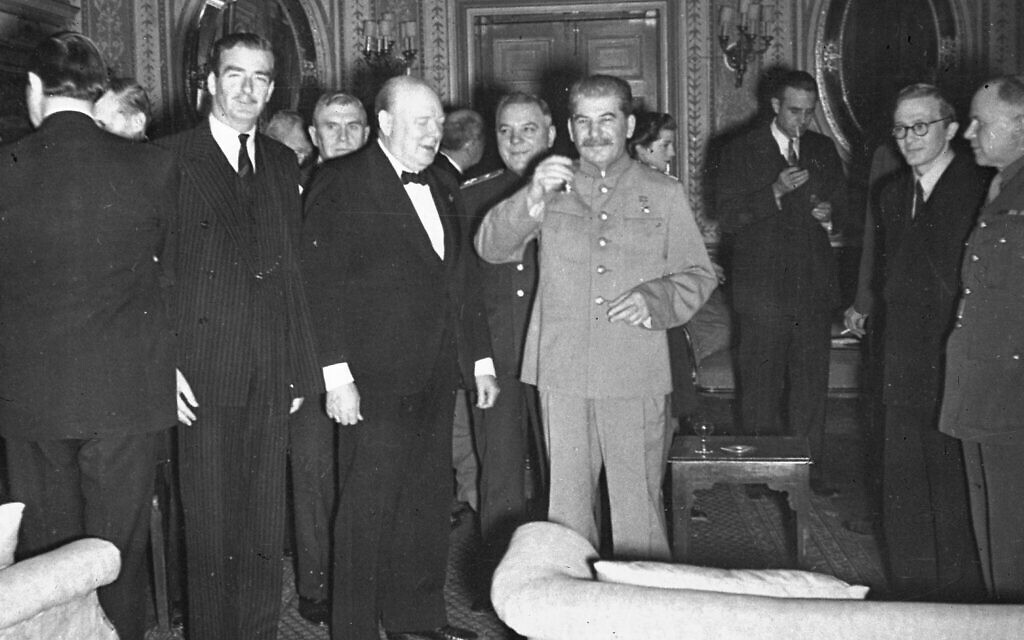
Joseph Stalin, standing with Winston Churchill and British foreign minister Anthony Eden, makes a toast at Churchill’s 69th birthday party in Tehran, Iran, November 30, 1943. (AP Photo)
The plot has also accumulated its share of detractors — including some who doubted its very existence.
Now the narrative gets a thorough examination in a new book, “The Nazi Conspiracy: The Secret Plot to Kill Roosevelt, Stalin, and Churchill,” by co-writers Brad Meltzer and Josh Mensch.
By the way, the Nazis tried to kill us
“You can see, in the book, FDR comes home from Tehran and he immediately says, the meeting went well and by the way, the Nazis tried to kill us,” Mensch told The Times of Israel in a joint interview with his co-author. “Normandy happens within a year and [the plot] becomes a footnote to history.”
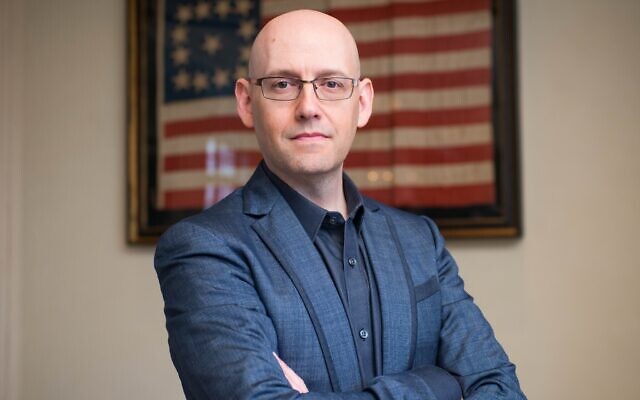
‘The Nazi Conspiracy’ co-author, Brad Meltzer. (Michelle Watson)
The authors have done their share of probing historical unknowns. Meltzer is a No. 1 New York Times bestselling author who also hosts two History Channel shows. In the latter capacity, he helped locate the American flag hoisted over Ground Zero by firefighters on 9/11 in an iconic photo — a flag that had mysteriously disappeared. He has collaborated with Mensch, a documentary TV producer and bestselling author, on two previous books about unsuccessful assassination plots targeting American presidents: George Washington and Abraham Lincoln.
“You work together writing a book, it’s a little bit like a marriage,” Meltzer reflected. “You may not agree on everything, but on the most important things, you share the same global worldview.”

‘The Nazi Conspiracy’ co-author, Josh Mensch. (Mary Robertson)
That worldview includes an enduring sense of horror at the Nazi war crimes. Discussed in detail in the authors’ latest book are events such as the 1942 Wannsee Conference that planned the extermination of European Jewry to the mass killings of the Holocaust — including the notorious 1943 Aktion Erntefest or “Operation Harvest Festival” massacre at the Majdanek extermination camp and two labor camps, Trawniki and Poniatowa.
Mensch is not Jewish, but his stepmother is, as was his late stepfather. “[The topic of the Holocaust is] a very important subject to my entire life,” he said. “The book is a chance to really deeply delve into the subject of intolerance and hatred of ethnic groups or minority groups.”
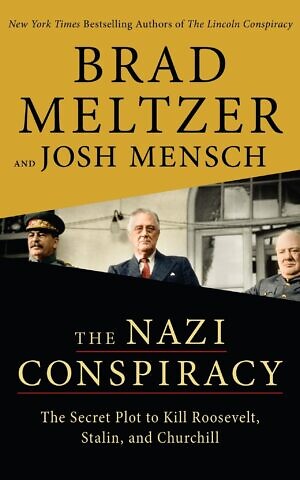
‘The Nazi Conspiracy,’ by Brad Meltzer and Josh Mensch. (Courtesy)
Meltzer, who is Jewish, recalled, “Someone once asked me on the book tour, ‘When did you first learn about the Holocaust, when did the Holocaust first come onto your radar?’ I said, for me, being Jewish, it’s always been on my radar. It’s never not been. The way you grow up, it’s part of your DNA.” And, he said, “it also gave me a far bigger impetus to tell the story.”
It’s a story that first came to Meltzer’s attention when he encountered a short article about it online.
“It was a plot to kill Churchill, Stalin and Roosevelt at the height of WWII,” he recalled. “I immediately sent it to Josh. Is it real? Is it not? What’s the story?”
After conducting research online and into existing volumes on the subject, the authors felt challenged.
“It was very, very confusing,” Meltzer said. “There was a lot of conflicting information. A lot of it turned out to be misinformation.”
“It was very hard to sift through all of the information out there, figure out what was real and what was not,” Mensch said.
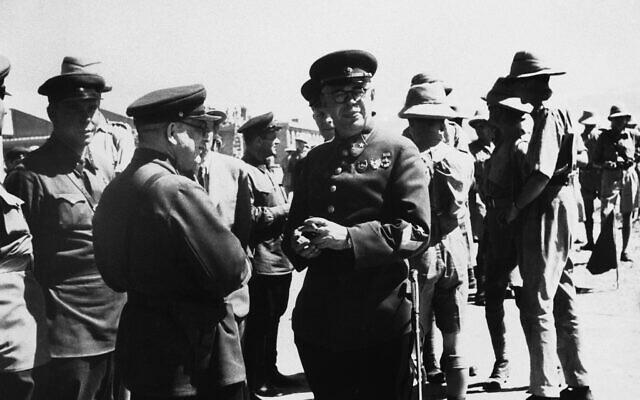
Major General Vassili Vassilovich Novikov, commanding Russian forces in northern Iran, center, facing camera, watching a review of his and British troops in Tehran, Iran on November 5, 1941. (AP Photo)
They learned that the Tehran meeting was tough to schedule, mainly due to Stalin, who refused to leave the Soviet Union, which was suffering staggering losses as it fought for its life against Nazi Germany. He suggested Astrakhan as a site; his counterparts offered such venues as Asmara, Ethiopia, and Ankara, Turkey. Ultimately he recommended Tehran — the capital of a neighboring country with an ancient history and a critical railroad link that brought in Allied supplies — and got what he wanted.
“He would not budge,” Meltzer said. “He earned the nickname ‘Man of Steel.’”
There was a hidden danger: The Third Reich had a track record of espionage in Iran, with a Sicherheitsdienst (SD) spy agency network headed by Walter Schellenberg. A key to its initial growth was German operative Franz Mayr, whose staying power through regime change had positioned him to strike a blow at the Allies.
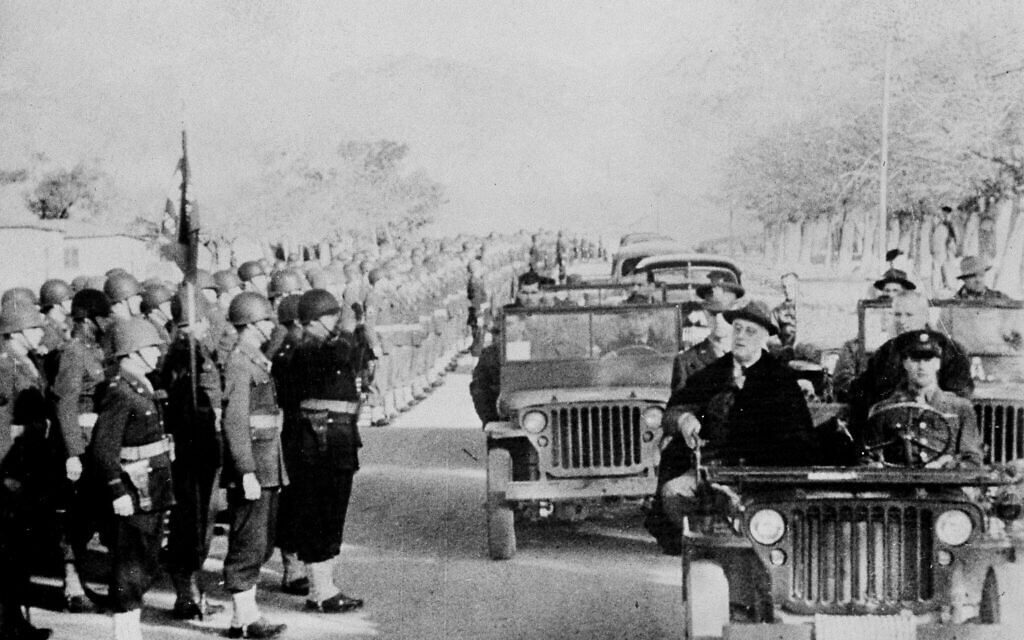
President Franklin D. Roosevelt reviews US troops from a jeep at an Army station in Tehran, Iran, after his conference with Winston Churchill and Joseph Stalin, December 14, 1943. (AP Photo/International News Photos)
At the outset of WWII, the government of Reza Shah was receptive to Nazi Germany. The Allies subsequently overthrew the shah, installed his son Mohammad Reza Pahlavi on the throne, and occupied Iran.
The idea is to sort of overthrow the Allied occupation
In a changed political climate, Mayr was “trying to create a sort of pro-Nazi movement underground in Tehran,” Mensch said. “He does recruit a number of people and organizations. The idea is to sort of overthrow the Allied occupation, align with Nazi Germany, help Nazi Germany.”
He succeeded enough to establish a drop zone and request supplies.
“In that moment, the Nazis had the greatest thing anyone gets in a fight,” Meltzer said. “An opportunity.”
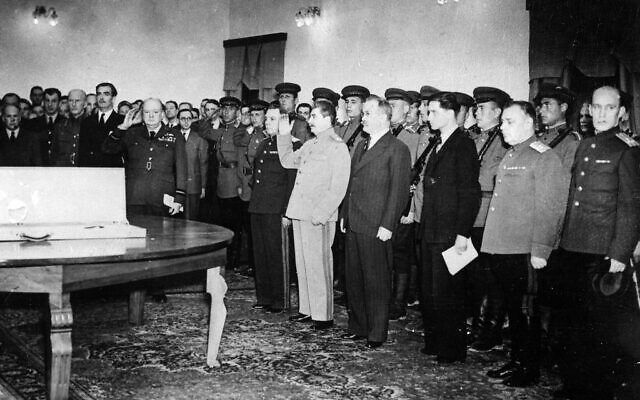
Josef Stalin and Winston Churchill salute their national anthems during the presentation of the Sword of Stalingrad, a gift from Britain’s King George VI to the people of Stalingrad, on the table, at the Soviet legation in Tehran, Iran, in November 1943. (AP Photo/British Official Photo)
However, Mayr was also indiscreet, sharing his schemes with his Iranian girlfriend, Lili Sanjari. She was secretly dating an American GI named Robert Merrick and telling him about Mayr’s plans. Merrick, it turned out, had a double life of his own as an intelligence agent who passed the information on to the British.
“Little does the Nazi agent Franz Mayr know his secrets are being shared with the Allies,” Mensch said. “Pretty soon after, his days sort of become numbered in Tehran.”
In mid-August 1943, British authorities apprehended a key member of the circle — Sanjari’s dentist uncle, who led them to Mayr. It was just in time. About two weeks earlier, on August 3, the SD sought confirmation from its operatives in Tehran of a meeting of the Big Three.
By late November, FDR, Churchill and Stalin had arrived in Tehran for their long-delayed meeting. Although Mayr was out of action, the Nazis had new plans. They had begun receiving intel on the Allies from an unexpected informant, “Cicero,” the Ankara-based valet to the British ambassador to Turkey. Hitler, Schellenberg and Skorzeny met at the Fuhrer’s Wolf’s Lair headquarters in East Prussia, allegedly to plan an operation in Tehran.

Illustrative: Hitler meeting Reich Commissioner Robert Ley, automotive engineer Ferdinand Porsche, and Reichsminister Hermann Göring at the Wolfsschanze (Wolf’s Lair) in 1942. (Bundesarchiv, Bild, via Wikipedia)
According to the Soviets, 38 German operatives parachuted into Iran, with all but six being captured by the eve of the conference. Soviet officials shared concerns of an assassination plot with American and British counterparts and persuaded the Americans to change their lodging from the US embassy to the Soviet embassy.
“They could have meetings in a very secure location,” Mensch said, adding that the Soviet embassy adjoined the British embassy. Had the leaders gone back and forth across the city, he added, “the big fear was if Nazi sharpshooters, soldiers or probable agents in disguise would have a shot at them.”
As readers will find, that’s not the most dramatic switcheroo the Allies pulled. Yet it was a crucial one.
“The Soviet discovery of the plot and the warnings to the Americans and British made it just about impossible for the Nazi agents to attempt this assassination,” Mensch said.
By the end of the conference, the six remaining operatives had been apprehended through Soviet counterespionage efforts. There would be no trip to Tehran for Skorzeny.
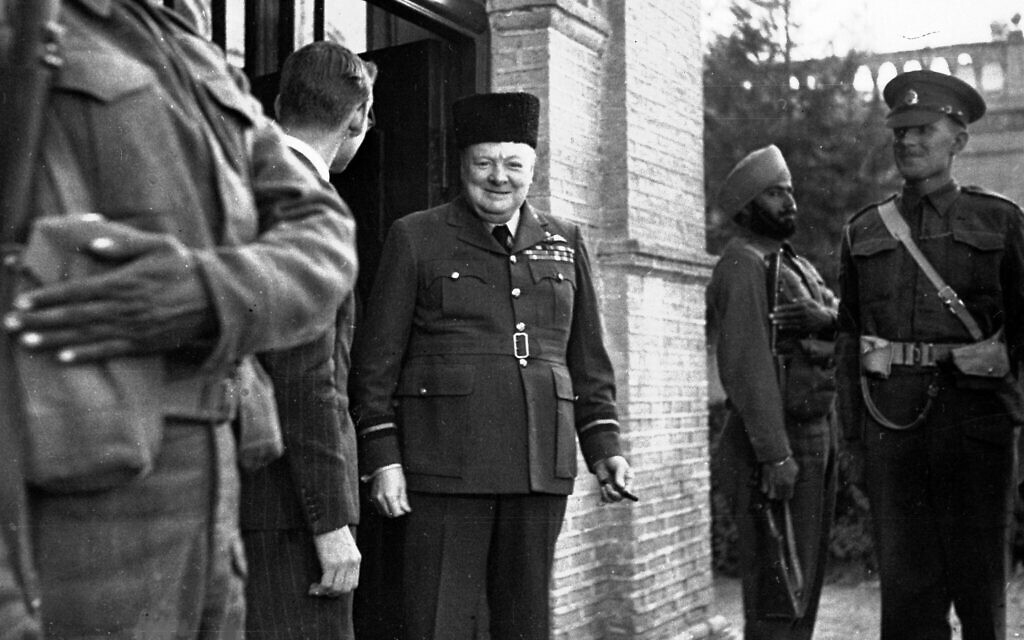
Winston Churchill wears a caracul hat, presented to him by the British Press Unit to mark his 69th birthday in Tehran, Iran, November 30, 1943. (AP Photo)
But a question remains: How much of a threat was there?
Early dissenters included Britain’s chief spymaster in Tehran, Joe Spencer, who disputed FDR’s account of a Nazi plot.
“Churchill himself always believed the plot was real,” Mensch said. “He writes about it in his memoirs… Not everyone on that side disputed it, but in general [those who did] tend to have been British historians and scholars.”
On December 29, 2022, the Daily Mail quoted British historian Andy Saunders stating “that there was no evidence that [Mayr] was there to organise an assassination attempt at all.”
Churchill himself always believed the plot was real
Asked about British doubts, Mensch cited another historian from the UK, Adrian O’Sullivan.
“[O’Sullivan] was very skeptical of the plot,” Mensch said. “He has written pretty extensively about the Iranian regime in the war, which provided a lot of information that was helpful to us about Franz Mayr, his circle and various Nazi missions to Iran in 1943. He thought the Soviets just made it up or exaggerated the plot for their own reasons. What we try to do in the book is sort through skeptical opinions.”
“We come down somewhere in the middle,” Mensch reflected. “There are different points of view and arguments for and against. Ultimately, we form our own conclusion. We’re very open about the fact that some information is still a mystery, still unknown.”


